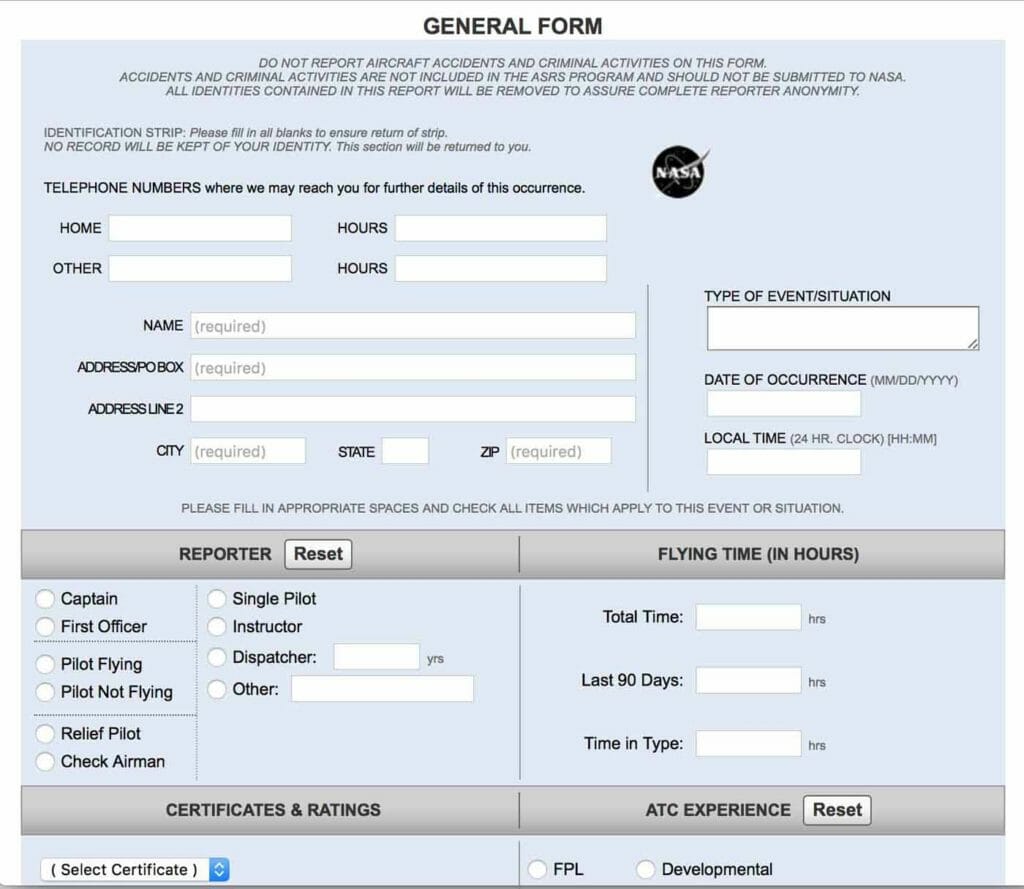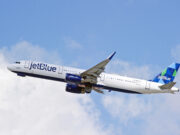
As we have discussed in previous articles, several decades ago safety trends began to highlight the Human Factors aspect of aviation safety as aircraft became much more automated and reliable. Once the need for addressing human factors issues became apparent in the aviation industry, officials started to work on a system that would allow for the identification of hazards and trends before they actually resulted in a significant number of accidents.
What evolved into NASA’s Aviation Safety Reporting System became the foundational bedrock for contemporary SMS systems by beginning to identify and track widespread trends, even if they didn’t necessarily result in an accident. Importantly, it also created a way for safety, regulatory and other interested parties to create a system by which critical information and trends could be disseminated throughout the aviation industry to the benefit of all parties in an effort to prevent accidents from occurring, even though the full Safety Management System Ideology hadn’t evolved yet.
The development of a safety reporting system was implemented as early as World War II, when it became obvious to military commanders that there was a great benefit to the active reporting of hazards by front line personnel. The military quickly realized the benefit of using front line feedback to improve safety and processes to mitigate further risk in an already risky operation.
By 1966, Director for the Bureau of Safety for the Civil Aeronautics Board, Bobbie R. Allen addressed the vast accumulated body of safety incident reporting as a “sleeping giant.” He also noted that people would not openly report information on safety incidents if there was widespread fear of being exposed and penalized for doing something wrong, and offered that a process to protect and de-identity the individual would help everyone by helping to encourage people to report incidents, problems and hazards, so that the information could be used by everyone to further prevent aviation incidents.
Eight years after Mr. Allen’s statement about the benefit of a large accumulated database of incident and accident knowledge, TWA Flight 514 crashed into the side of a mountain due to confusion about what the ATC clearance allowed, once ATC issued a final vector and then said “cleared for the approach” when not on a published sector of the approach. While discussing the issue, of which they were unsure of the correct answer, the crew of TWA flight 514 descended from a vector altitude of 7,000 feet down to the approach segment altitude of 1,800 feet because they believed that the radar vector covered them to descend for the next segment of the approach, which was published at 1,800 feet. Due to turbulence at the time, they impacted a mountain at approximately 1,700 feet, killing all 92 people on board, during a downdraft in a snow storm.

While this accident was a travesty in its own right, the real issue that came into view during the investigation was that a United Airlines flight had run into the exact same issue with almost the exact same result merely 6 weeks earlier at the same airport, on the same approach. Due to fortune, the United crew narrowly escaped impacting the ground, while the TWA crew did not. But what was discovered was that the same vague ATC clearance existed in both cases, the same crew confusion existed in both cases, the same approach existed in both cases, and the same accident point (or near miss point) occurred in both cases. Since there was no mechanism for the United crew to share the details of the incident, there was no way for the same information to be distributed amongst the FAA, ATC, the airlines, the charting companies, etc. to prevent the TWA disaster from occurring.
The cause was determined to be confusion about what ATC’s clearance was protecting the crew from, since it was assumed by the crews that ATC was providing a vector to get onto the approach and thus was also protecting them to descend down to the approach altitude on the next segment. In reality, ATC’s instruction was releasing them to navigate on their own with no protection from obstacles whatsoever. It was specifically because of this confusion that ATC now states “maintain X,XXX feet until established” when issuing an approach clearance.
Also as a result of this accident, the FAA quickly set to work developing a system for the sharing and distribution of information as talked about by Mr. Allen nearly a decade earlier. After initial lack of success with an FAA run program, it was realized that there needed to be an independent third party to handle the classification and recording of information because the people who were expected to report the data were not going to report it to the same body of people who were responsible for enforcement. It was seen as confessing a crime to the police and people were afraid of reprisal for trying to do the right thing, so they overwhelmingly did not report issues, despite the FAA repeatedly pushing that they wouldn’t punish reporters.
Enter NASA, who with a large background and understanding of aviation and aviation safety, had no enforcement or oversight role in the aviation system. Together with NASA, the FAA developed what would become the Aviation Safety Reporting System, or ASRS, to provide a means for constituents to report incidents and hazards in a way where they could be classified, logged into a database and de-identified to prevent them from being used negatively against those who reported the hazards.
Essentially, ASRS is a system that is available to any crew member, mechanic, ATC controllers, dispatchers, GA pilots, etc. to report relevant hazards that are then classified and categorized by specialists in aviation that work for NASA and not the FAA. After receiving a report, the report is timestamped, sorted based on category of hazard, processed, reviewed, de-identified of any personal information, entered into the public database and then the original destroyed. Of course, there are multiple checks for accuracy to ensure that data is correct for the maximum benefit of the system, but at the end, it is essentially an anonymous report that can be searched publicly for the benefit of anyone who might be interested. A letter is mailed to the reporter as a protection against violation from the FAA should further action be taken. Although NASA ASRS does not protect against FAA violation, the FAA considers that an ASRS report demonstrates a “constructive attitude” toward preventing future violations and neither a civil penalty nor a certificate suspension will occur if an ASRS was reported without one of the following exceptions:
The violation was deliberate and not inadvertent
The violation did not involve a criminal offense, accident or violation as the result of lack of qualification or incompetency
The person has not been found in any prior FAA enforcement action for a period of 5 years prior, which essentially means that the pilot can use 1 ASRS report in a five year period for protection from civil fines or suspension if the FAA decides to violate.
That within 10 days of the violation or within a date of finding out about the incident or violation, the person filed a NASA ASRS report.
Similar to most modern safety systems, the ASRS report protects against unintentional mistakes or lapses, but does not provide an avenue to protect against willful violation, criminal activity, or complacency in participating in the system with good faith. Since its inception, ASRS has logged over 1.3 million reports, with an average of 372 reports per day as of 2015, which has been an exponential increase from year to year. As the foundation of reporting safety issues, ASRS bears an ancestry with the more modern reporting systems which will be discussed in the next several issues.
For further information on the NASA ASRS system visit: asrs.arc.nasa.gov.
As always, in an attempt to maximize the value of Aero Crew News for our readers, we appreciate any feedback, questions or suggestions for topics of discussion. Please email me at scott.stahl@aerocrewnews.com for any feedback or submissions.

























































